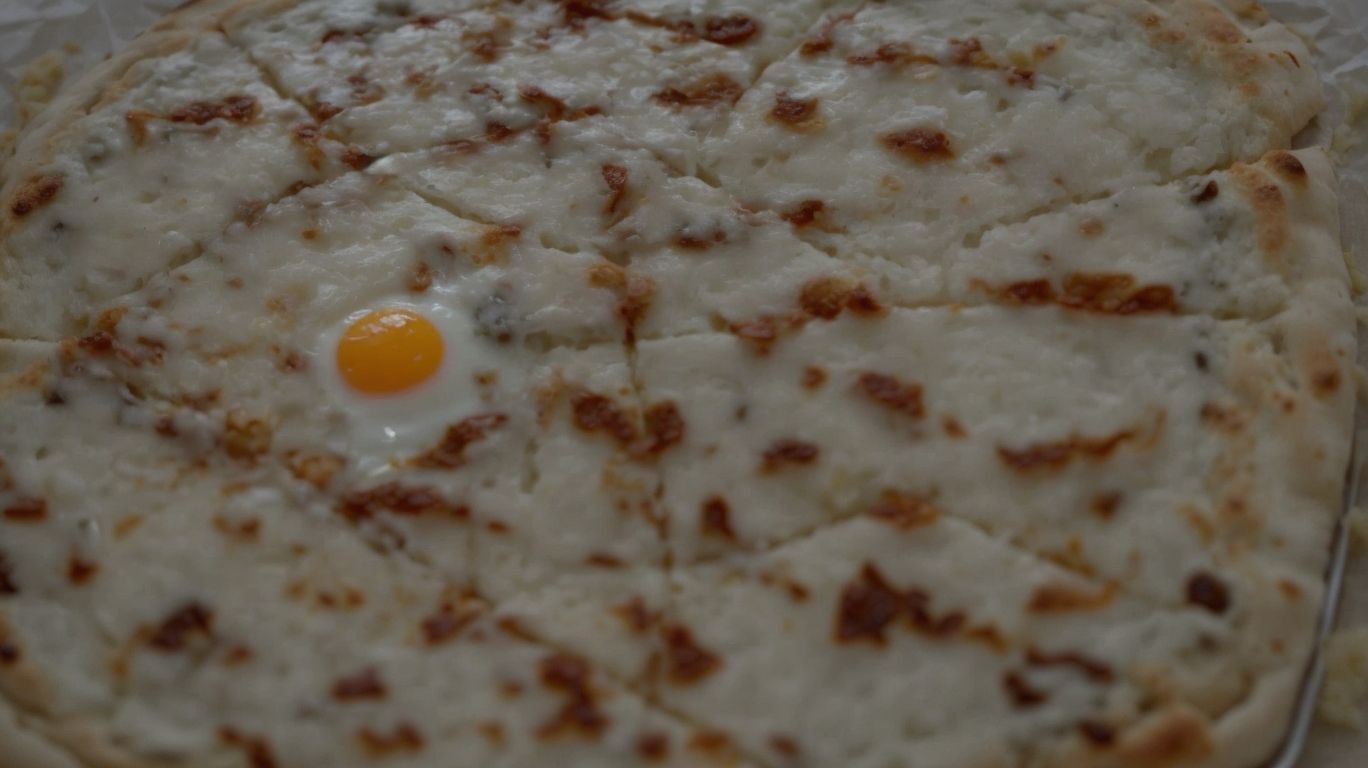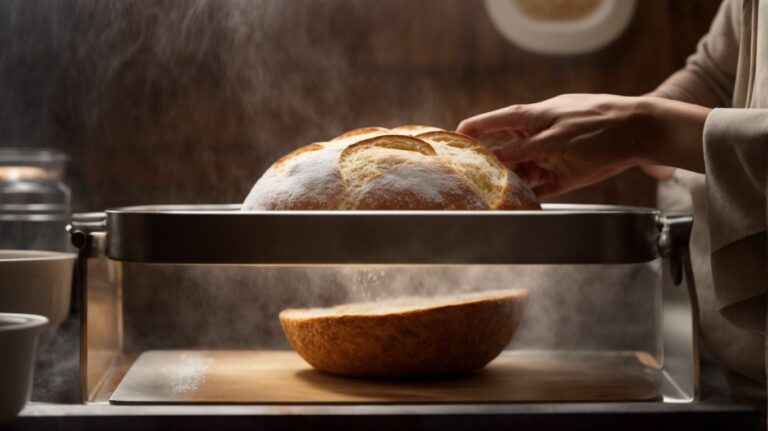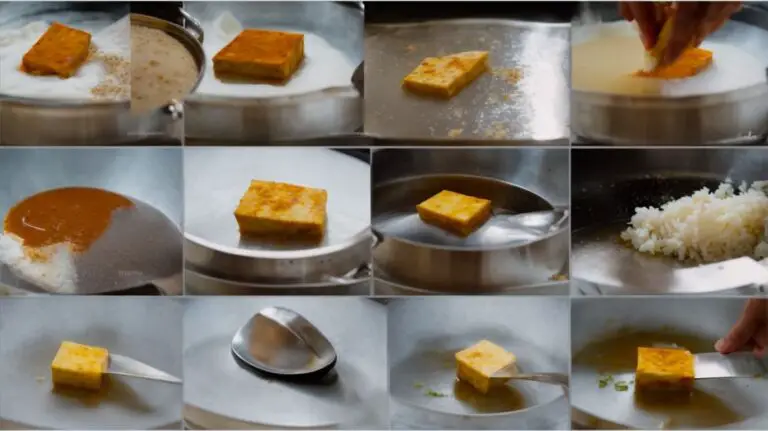How to Cook Egg on Pizza?
Are you looking to take your pizza game to the next level?
Adding eggs to your pizza not only boosts the protein content but also enhances the flavor and creates a creamy texture.
In this article, we will discuss the different types of eggs you can use, how to prepare the pizza dough, various egg topping options, and the best methods for cooking eggs on pizza.
Stay tuned for some tips on achieving the perfect egg-topped pizza!
Key Takeaways:
Why Add Egg to Pizza?
Adding eggs to pizza is a culinary choice that can elevate the dish to new heights, offering a unique blend of flavors and textures.
When eggs are incorporated into pizza, they provide richness and creaminess that complements the traditional toppings perfectly. Not only do eggs enhance the taste by adding a savory element, but they also contribute to the overall texture of the pizza, creating a delightful contrast between the runny yolk and the crisp crust.
Eggs bring a nutritional boost to the pizza, adding protein, vitamins, and minerals to the dish. Whether scrambled, poached, or baked directly on top of the pizza, the versatility of eggs allows for various preparation methods that can cater to different preferences.
Adds Protein
One of the key benefits of adding eggs to pizza is the boost in protein content, which can make the dish more satisfying and nutritious.
Protein is crucial for various bodily functions, such as building and repairing tissues, creating enzymes and hormones, and supporting a healthy immune system. Incorporating protein-rich ingredients like eggs and mozzarella into pizza toppings not only enhances the flavor but also adds to its overall nutritional profile.
When considering a balanced diet, protein plays a vital role in satiety, helping to keep you full for longer periods and reducing the likelihood of unhealthy snacking. By choosing toppings rich in protein, like eggs, you can elevate the nutritional value of your pizza without compromising on taste.
Enhances Flavor
Incorporating eggs into pizza not only adds protein but also imparts a rich and savory flavor that complements other ingredients on the pie.
When cracked onto a freshly prepared pizza, eggs bring a velvety texture that blends with the sauce and cheese to create a decadent and harmonious medley of flavors. The runny yolk acts as a luscious sauce of its own, infusing each bite with a luxurious creaminess. The egg’s ability to slightly caramelize during baking adds depth and a hint of nuttiness to the overall profile of the pizza, elevating it to a new level of gastronomic delight. With each slice, the interplay of the rich yolk, melted cheese, and tangy sauce creates a symphony of taste sensations that are bound to excite the palate.
Creates a Creamy Texture
The addition of eggs to pizza can create a luscious and creamy texture that contrasts beautifully with the crispy crust and gooey cheese.
When eggs are cracked over a pizza before baking, they bring a unique richness to the dish, enhancing its overall flavor profile. Once the pizza is cooked, the eggs develop a runny consistency that provides a velvety smoothness to each bite. This runny yolk not only adds a burst of savory goodness but also acts as a binding agent, seamlessly uniting other toppings and cheese.
The interplay of textures on an egg-topped pizza is truly delightful. The juxtaposition of the runny yolks against the crispy edges of the crust creates a dynamic eating experience. Each bite offers a harmonious blend of textures – from the satisfying crunch of the crust to the luxurious creaminess of the eggs.
What Type of Eggs Should You Use?
Choosing the right type of eggs for your pizza recipe can significantly impact the taste and texture of the final dish.
In terms of selecting the perfect egg for your pizza topping, there are a few popular options to consider. Chicken eggs, with their rich and creamy flavor, are a classic choice that pairs well with almost any pizza style, from traditional margherita to bold BBQ chicken.
On the other hand, quail eggs offer a more delicate and milder taste, ideal for gourmet pizzas with sophisticated toppings like prosciutto and pesto.
Duck eggs, known for their robust flavor and larger size, can add a luxurious touch to pizzas with hearty toppings such as mushrooms and truffle oil.
Chicken Eggs
Chicken eggs are a versatile choice for pizza toppings, offering a familiar taste and texture that pairs well with a wide range of ingredients.
In terms of incorporating chicken eggs into pizza recipes, their richness adds a delightful creaminess to the dish, complementing the gooey cheese and savory toppings. The eggs can be prepared in various ways to suit different preferences – from sunny-side-up for a runny yolk experience to scrambled for a more evenly distributed egg topping. The addition of salt and pepper not only enhances the flavor of the eggs but also balances out the overall taste of the pizza.
Quail Eggs
Quail eggs bring a unique and delicate flavor to pizza, ideal for adding a gourmet touch to your homemade pies.
When incorporated into a pizza, these small eggs offer a rich and creamy texture that elevates the overall taste profile. Quail eggs are a popular choice for those looking to experiment with new and interesting pizza toppings, as they complement a variety of flavors from savory meats to fresh vegetables. The contrast between the doughy base and the crispy quail eggs creates a delightful textural experience that is sure to impress even the most discerning of pizza lovers. Whether you opt for a traditional Margherita pizza or a more adventurous seafood combination, adding quail eggs brings a sophisticated flair to any pizza creation.
Duck Eggs
Duck eggs offer a rich and decadent addition to pizza, enhancing the overall flavor profile with their luxurious taste and creamy texture.
When including duck eggs as pizza toppings, one can experience a delightful contrast to traditional toppings like chicken or pepperoni. The creamy yolks of duck eggs provide a velvety consistency that adds depth to each bite, while their richer flavor elevates the overall pizza experience. For a creative twist, try adding pre-baked duck eggs as a finishing touch to a gourmet pizza. These eggs not only infuse the dish with a unique taste but also act as a natural binder, holding other ingredients together beautifully.
How to Prepare the Pizza Dough?
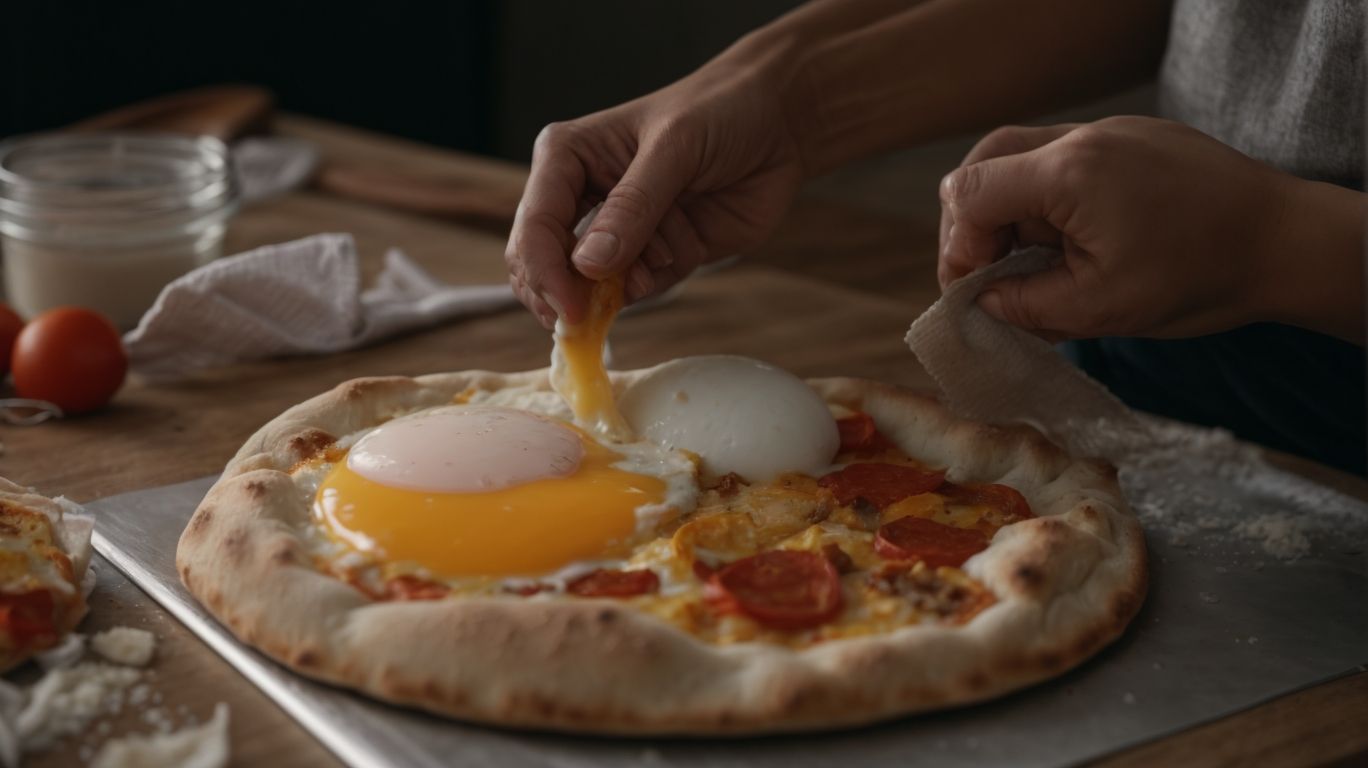
Credits: Poormet.Com – Stephen Perez
Preparing the perfect pizza dough is essential for achieving a crispy and flavorful base that complements your chosen toppings.
To start making pizza dough from scratch, you will need some key ingredients: all-purpose flour, yeast, olive oil, salt, and sugar. Begin by combining warm water, yeast, and sugar in a bowl and letting it sit for about 5 minutes until it becomes frothy. Next, add the flour, salt, and olive oil, and knead the dough until it’s smooth and elastic. Let it rise in a warm place until doubled in size.
- Once the dough has risen, punch it down to release excess air and divide it into portions for your pizzas.
- Preheat your oven to the highest temperature and roll out the dough into your desired shape, ensuring it’s not too thick.
- Place the rolled-out dough on a baking sheet or pizza stone, add your favorite toppings, and bake in the preheated oven until the crust is golden and crispy.
How to Prepare the Egg Topping?
Creating a delicious egg topping for your pizza involves careful preparation and attention to detail to ensure the eggs are cooked to perfection.
One popular method of preparing egg toppings for pizza is by making scrambled eggs. Start by whisking the eggs with a splash of milk and seasoning them with salt and pepper. Cook them in a pan until they are just set but still moist. Spread the fluffy scrambled eggs over your pizza crust and bake until they are lightly golden.
If you prefer a different texture, you can opt for fried eggs as toppings. Heat a little oil in a pan and crack the eggs into it. Cook until the whites are set but the yolks are still runny. Carefully transfer the fried eggs onto your pizza just before serving.
For a more delicate option, try using poached eggs as pizza toppings. Poach the eggs in gently simmering water with a splash of vinegar until the whites are firm but the yolks are still soft. Place the poached eggs on the pizza and bake briefly to warm them up before serving.
Scrambled Egg Topping
Scrambled eggs make a delightful and creamy topping for pizza, adding a comforting and familiar touch to your homemade pies.
To create the perfect scrambled egg topping for your pizza, start by cracking the eggs into a bowl and whisking them to achieve a smooth consistency. Add a pinch of pepper for a hint of spice and extra flavor. Heat a skillet over medium heat and melt a knob of butter before pouring in the eggs. For a slightly runny texture, continuously stir the eggs as they cook, ensuring they don’t overcook. Once the eggs are just set, remove them from the heat and spoon them generously over your pizza before baking. The result is a delicious, protein-packed twist on a classic favorite.
Fried Egg Topping
A fried egg topping can bring a rich and indulgent flavor to your pizza, with the runny yolk adding a luscious touch to each slice.
When frying eggs for pizza toppings, it’s crucial to achieve the perfect balance between a crispy bottom and a soft yolk. To do this, heat a skillet over medium heat and add a knob of butter or a drizzle of oil. Crack the egg gently into the pan, being careful not to break the yolk. Season with a pinch of salt to enhance the flavors. Cook until the edges are golden and crispy, but the center remains slightly runny.
Poached Egg Topping
Poached eggs offer a delicate and elegant topping for pizza, with the soft yolk providing a velvety richness that enhances every bite.
In terms of adding poached eggs to pizzas, the key lies in achieving the perfect poached egg consistency to complement the other toppings. To achieve this, bring a pot of water to a gentle simmer, add a splash of vinegar – which helps the egg whites to coagulate – and carefully slide in the cracked eggs. Poach them until the whites are set but the yolks are still runny, creating that signature creamy texture.
Not only do poached eggs add a luxurious touch to pizzas, but when paired with a drizzle of pesto, they offer a burst of fresh flavors. Alternatively, for those craving contrasting textures, topping your pizza with crispy bacon or crunchy pancetta alongside the poached eggs introduces a delightful mix of flavors and mouthfeel.
How to Cook Egg on Pizza?
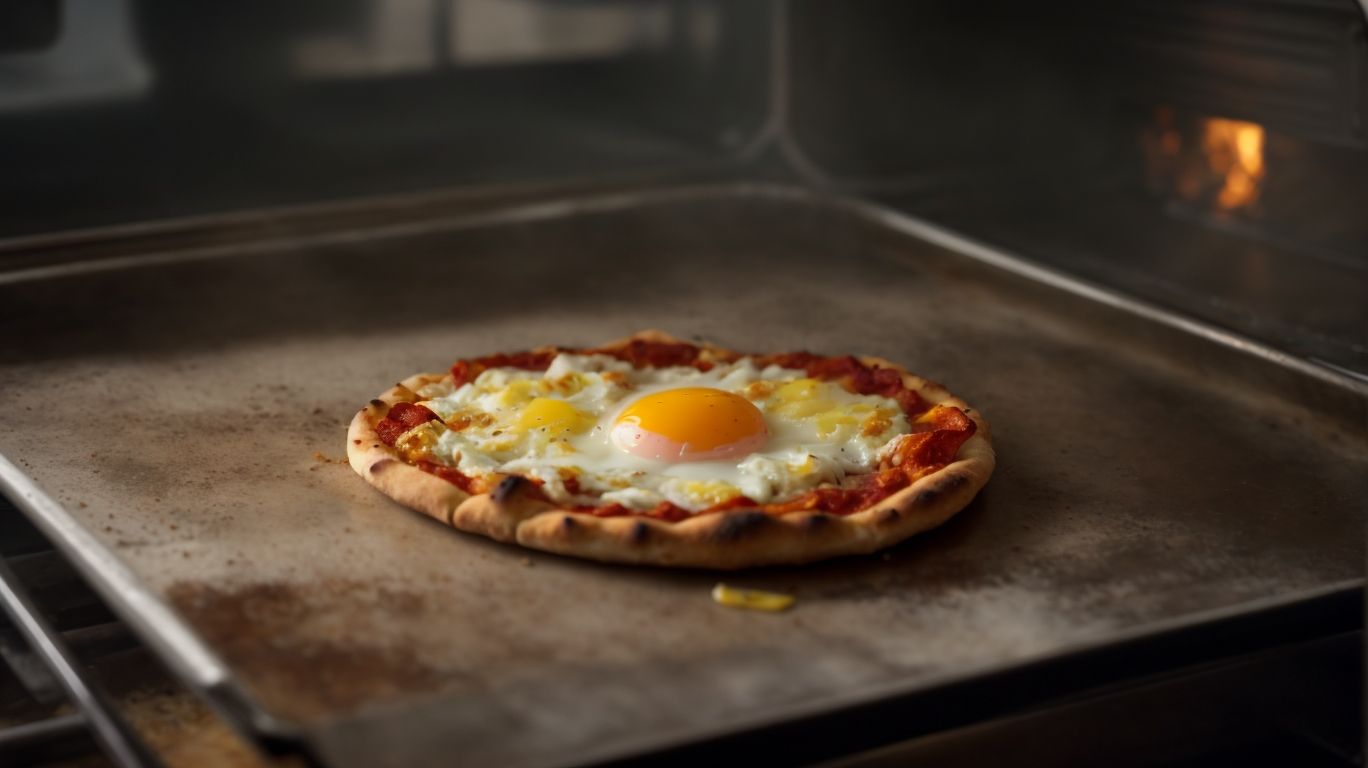
Credits: Poormet.Com – Mason Flores
Cooking eggs on pizza requires precision and timing to ensure that the eggs are perfectly cooked and harmonize with the other ingredients.
Preheating your oven is the crucial first step in achieving a delicious egg-topped pizza. Set the temperature to 450°F (232°C) and allow it to preheat while you prepare the dough and toppings. Mozzarella cheese is a classic choice when it comes to topping pizzas, and its gooey melt complements the eggs perfectly.
As you roll out the pizza dough, make sure it’s evenly stretched to provide a sturdy base for the eggs. Once the dough is ready, spread a generous layer of homemade tomato sauce or olive oil over it before adding the toppings.
Preheat the Oven
Preheating the oven is a crucial step in cooking eggs on pizza, ensuring that the dish bakes evenly and the eggs reach the desired level of doneness.
When baking a pizza with eggs, the oven needs to be preheated to the appropriate temperature to guarantee a perfect outcome. This process not only helps in evenly cooking the eggs but also ensures that the crust gets crispy and delicious. Setting the oven at around 450°F to 500°F is ideal for achieving that golden-brown crust and fully cooked eggs. Whether you prefer a classic combination like ham and cheese or a more adventurous choice with various toppings like mushrooms, olives, or peppers, the preheating step remains essential for a successful pizza creation.
Roll Out the Pizza Dough
Rolling out the pizza dough to the desired thickness sets the foundation for a perfect pizza base that can support the weight of the toppings, including the eggs.
When preparing the pizza dough for your egg-topped creation, pay close attention to achieve uniform thickness. Whether you prefer a thin crust for a crispy bite or a thicker crust for a more substantial base, consistency is key. Use a rolling pin on a lightly floured surface to gently stretch the dough outwards. Remember to rotate the dough regularly to ensure an even distribution of thickness. Be mindful not to overwork the dough to maintain that delightful chewiness once baked.
Add the Egg Topping
Adding the egg topping to the pizza requires careful placement and distribution to ensure each slice features a balanced and flavorful egg portion.
One popular way to incorporate egg as a topping is by cracking a fresh egg onto the center of the pizza just before it goes into the oven. This method allows the egg to cook along with the pizza, creating a rich and creamy texture.
To complement the egg, consider layering it with gooey cheese such as mozzarella or feta. The melted cheese adds a wonderful contrast to the softness of the egg, enhancing both the texture and flavor profile.
For an added burst of flavor, drizzle a swirl of sauce such as pesto or marinara over the egg before serving. This not only elevates the visual appeal of the pizza but also introduces a tangy or herbaceous note that balances the richness of the egg.
Bake the Pizza
Baking the pizza with the egg topping requires monitoring the cooking process to achieve the desired level of doneness for both the eggs and the crust.
Preheat your oven to 450°F to ensure a hot enough temperature for the pizza to cook through. Once you’ve topped your pizza dough with sauce, cheese, and any additional toppings like peppers or sausage, carefully crack the eggs on top, making sure they are spread evenly to ensure consistent cooking.
Place the prepared pizza in the preheated oven and bake for around 12-15 minutes, checking periodically to ensure the eggs are cooking to your liking. The eggs should be set but slightly runny, and the crust should be golden and crispy around the edges.
Tips for Perfect Egg on Pizza
Achieving the perfect egg topping on your pizza requires attention to detail and some expert tips to ensure a delicious and visually appealing final dish.
One important aspect in preparing your egg topping is to consider the runny texture of the egg. To secure a runny yolk, it’s advisable to cover the pizza with the egg during the final few minutes of baking. This ensures that the yolk retains its desired consistency without overcooking. Seasoning with a pinch of salt and pepper before baking can enhance the flavor profile of the egg, complementing the overall taste of the pizza.
Conclusion
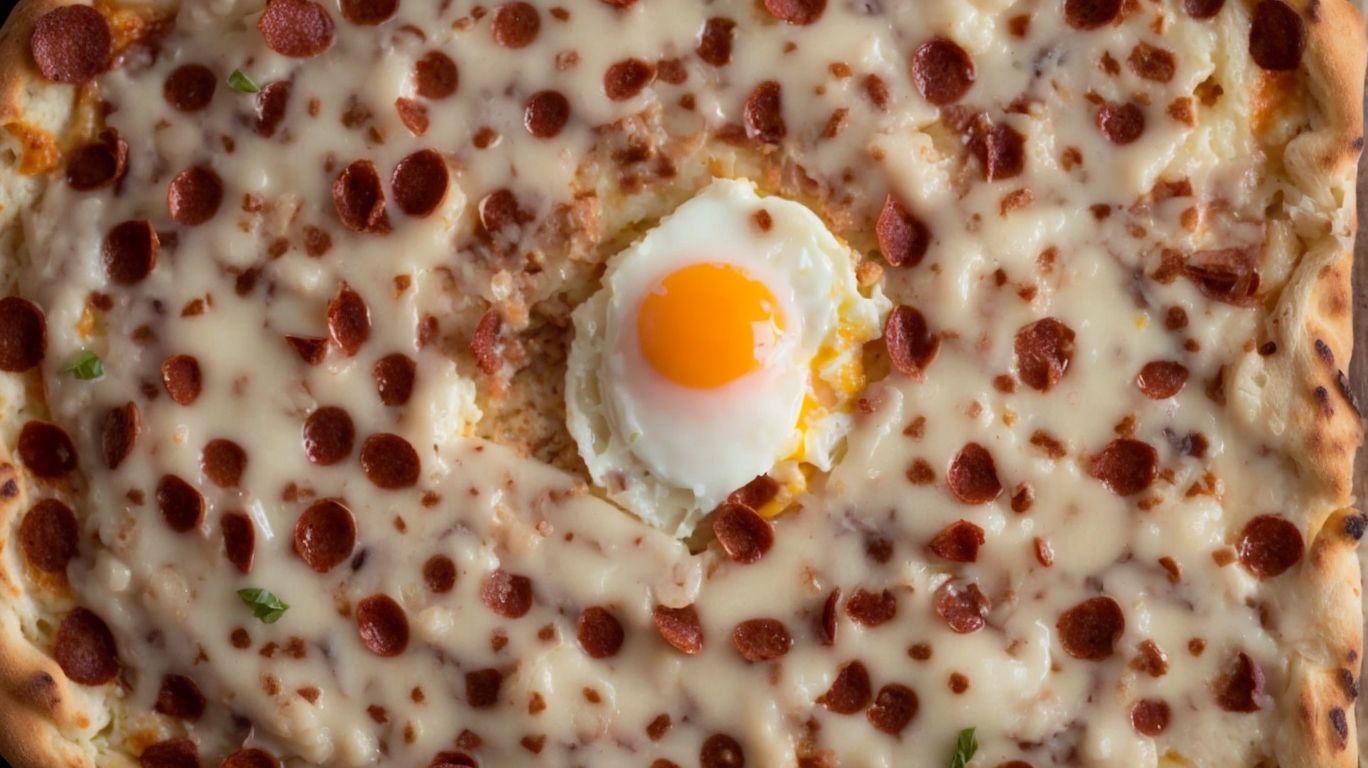
Credits: Poormet.Com – Logan Hill
Adding eggs to pizza can transform a simple dish into a gourmet experience, offering a medley of flavors, textures, and nutrients that appeal to all palates.
When incorporating eggs into pizza recipes, the possibilities are endless. The richness of the egg yolk can add a luxurious creaminess to the pizza, elevating its taste and creating a delightful contrast with the other ingredients. Eggs also provide a protein boost, making the pizza a more satisfying and nutritious meal option. Whether you prefer a classic Margherita pizza with a runny egg in the center or a decadent breakfast pizza with scrambled eggs, bacon, and cheese, the versatility of eggs allows you to experiment and create innovative pizza variations to suit your taste.
Frequently Asked Questions
1. How do I cook an egg on pizza?
Answer:
To cook an egg on pizza, you can crack the egg directly onto the pizza before baking it. Alternatively, you can cook the pizza first and then crack the egg onto it and put it back in the oven for a few minutes until the egg is cooked to your liking.
2. Can I use any type of egg on pizza?
Answer:
Yes, you can use any type of egg on pizza. Whether it’s a chicken egg, quail egg, or even a duck egg, they will all work well on pizza. Just make sure to adjust the cooking time accordingly depending on the size of the egg.
3. Do I need to pre-cook the egg before putting it on pizza?
Answer:
No, you do not need to pre-cook the egg before putting it on pizza. The egg will cook perfectly in the oven along with the pizza. Just make sure to crack the egg directly onto the pizza or onto the pizza after it has been cooked.
4. Can I add other toppings along with the egg on pizza?
Answer:
Absolutely! You can add other toppings such as bacon, sausage, vegetables, or even other types of cheese along with the egg on pizza. Just make sure not to overcrowd the pizza and to evenly distribute the toppings for the best results.
5. Is there a specific type of pizza that pairs well with egg?
Answer:
One of the most popular types of pizza that pairs well with egg is the classic breakfast pizza. This usually consists of a white sauce or pesto base, topped with bacon, cheese, and of course, a cracked egg. However, you can get creative and experiment with any type of pizza you like.
6. How do I prevent the egg from overcooking on pizza?
Answer:
To prevent the egg from overcooking on pizza, it is best to keep an eye on it and take the pizza out of the oven as soon as the egg reaches your desired level of doneness. You can also cover the pizza with foil during the last few minutes of cooking to prevent the egg from getting too crispy.

